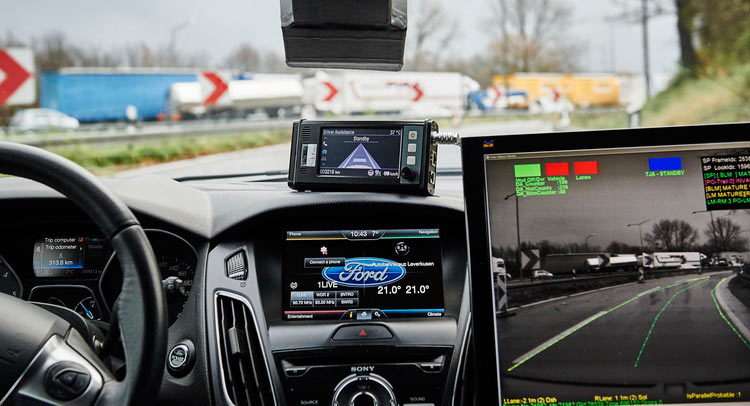Ford is jumping on the semi-autonomous bandwagon with the development of a traffic jam assist and remote parking systems.
The company’s Traffic Jam Assist system will help the driver in keeping the vehicle centered in the lane, while retaining the functions of a radar-based adaptive cruise control system by keeping a selected distance from the vehicle in front of it.
The system will be activated by pushing a button whenever the driver encounters a traffic jam, making use of a grille-mounted radar and the location of lane markings with the help of a front-facing camera behind the windscreen.
During its operation the system will monitor the driver’s interaction with the steering wheel, meaning that the driver will not be able to take his/hers hands off it, and if it detects a lack of interaction, will issue a series of acoustic and visual warnings, as the driver is required to monitor the driving environment and be alert to take control of the vehicle.
“For many drivers, fighting heavy traffic on the way to work leaves them stressed, angry and exhausted, even before the work day begins,” said Reid Steiger, technical expert, Automated Driving, Ford of Europe. “Traffic Jam Assist helps the driver maintain the distance to the vehicle ahead and helps to keep the vehicle centered in the lane. The system aims to reduce driver stress in dense traffic scenarios.”
Another new feature being developed is the remote parking system, which will enable drivers to more easily park perpendicularly in narrow garages and crowded parking stations by controlling their vehicles with a special key fob, giving the ability to remotely start the engine and shift gears from a better vantage point but near the vehicle.
The new remote parking system build on the company’s Active Park Assist and the upcoming Fully Assisted Parking Aid, which enables the driver to automatically parallel park the vehicle with the push of a button.
Ford didn’t share when we will see these semi-autonomous and remote parking technologies going into production but we are guessing the first models to feature them will be ready in 2016.





